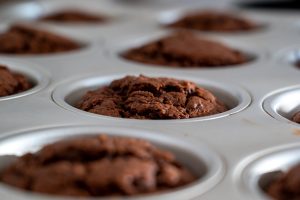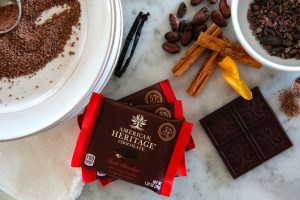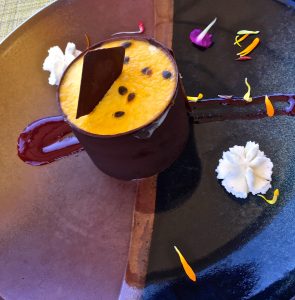Peru, a nation with a rich tapestry of ancient cultures and breathtaking natural beauty, also holds a cherished spot in the global cacao scene. Its journey with cacao is not a recent affair but a deep-rooted relationship that traces back to ancient civilizations. The country’s cacao heritage is not only a matter of national pride but also a significant contributor to the global chocolate industry. Peru’s cacao is a narrative of the past, a partaker in the global cacao dialogue, and a promise of many sweet tomorrows.
Historical Background of Peruvian Cacao



The narrative of cacao in Peru is as ancient as the whispering winds across the Andes. It was here, amid the lush and vibrant landscapes, that ancient cultures cultivated cacao, cherishing it for its mystical properties and its rich, complex flavors. The cultural significance of cacao is interwoven with Peru’s history, holding a revered place in ancient ceremonies and daily life.
As time meandered through the centuries, the Peruvian chocolate industry evolved, mirroring the global appetite for this dark and luscious delight. The blend of ancient knowledge with modern techniques has given rise to an industry that not only honors its past but eagerly embraces the future. Today, Peruvian chocolate is a name that resonates with quality and uniqueness among chocolate connoisseurs globally.
Uniqueness of Peruvian Terroir
The terroir of Peru is a treasure trove for cacao cultivation. The interplay of soil, climate, and elevation creates a sanctuary where cacao beans develop their distinctive flavor profiles.
- Soil Composition: The fertile soils of Peru, nurtured by ancient rivers and volcanic minerals, provide a hospitable abode for cacao trees. The mineral richness of the soil imprints on the cacao beans, contributing to their unique taste profiles.
- Climate Conditions: Peru’s diverse climate, characterized by a juxtaposition of microclimates, provides the ideal backdrop for cacao cultivation. The gentle rains, the nurturing sun, and the whisper of the cool breeze across cacao plantations contribute to a slow maturation of cacao pods, allowing the beans to develop a rich, complex flavor bouquet.
- Elevation: The varying elevations at which cacao is cultivated in Peru further refine its flavor profile. Higher elevations often harbor cooler temperatures and diverse microclimates, fostering a more nuanced development of flavors in the cacao beans.
The resonance of Peru’s unique terroir in every cacao bean is a testimony to the exceptional quality and distinctive flavor profile of Peruvian chocolate. This magical blend of natural factors crafts a terroir that not only nurtures the cacao trees but also enthralls the palate of those who venture into the delightful experience of savoring Peruvian chocolate.
Exceptional Varieties of Peruvian Cacao
Peru is a cultivator of some of the most revered cacao varieties known to the chocolate world. Among them, Criollo, Trinitario, and Forastero are the most distinguished, each contributing its unique flavor and texture profile to the rich tapestry of Peruvian chocolate.
- Criollo: This is a rare and precious variety, often regarded as the “prince of cacaos.” Criollo cacao from Peru is known for its fine flavors and aromas, often carrying notes of nuts, caramel, and a variety of fruits.
- Trinitario: A hybrid between Criollo and Forastero, Trinitario combines the robustness of Forastero with the refined flavors of Criollo. Its flavor profile is a delightful blend of the two, offering a rich and balanced chocolate taste.
- Forastero: Known for its hardiness and higher yield, Forastero is the most common cacao variety. While it may lack the fine flavor profile of Criollo, it has a strong chocolatey taste that forms the backbone of many chocolate products.
The Flavor Spectrum of Peruvian Chocolate



Peruvian chocolate is like a symphony where notes of fruitiness, floral essence, nutty undertones, and hints of caramel and vanilla play harmoniously. The taste journey often begins with:
- Fruity and Floral notes: The first notes that greet the palate are often fruity, reminiscent of berries, tropical fruits or citrus, followed by soft floral notes that evoke the lush Peruvian landscapes.
- Nutty undertones: As the fruity and floral notes gently recede, they pave the way for warm, comforting nutty undertones. These may remind one of almonds or hazelnuts, adding a comforting, earthy depth to the flavor profile.
- Hints of caramel and vanilla: The finale often carries sweet whispers of caramel and vanilla, rounding off the tasting experience with a sweet, creamy finish.
Processing Techniques and Flavor Development
The journey from bean to bar in Peru is a blend of age-old traditions married to modern techniques. The steps of processing, each executed with meticulous care, play a pivotal role in flavor development.
- Fermentation: The art of fermentation is crucial for developing the complex flavor profile of Peruvian chocolate. Traditional wooden fermentation boxes or modern stainless steel containers are used to ferment the beans, a process that helps to reduce bitterness and develop flavor precursors.
- Drying: Sun-drying is a traditional method employed in Peru, where beans are laid out under the gentle sun, allowing the flavors to further mature while reducing moisture content.
- Roasting: The roasting process is where the flavor precursors developed during fermentation are transformed into the distinctive chocolate flavor. Peruvian chocolate makers carefully curate the roasting profiles to highlight the unique flavors inherent in the different cacao varieties.
Through a dance of tradition and technology, Peruvian chocolate makers are able to craft chocolates that not only echo the rich history of cacao cultivation in Peru but also resonate with modern palates, offering a taste experience that is as unique as the land from which it springs.
Sustainable and Ethical Practices
Peru’s chocolate industry stands as a beacon of sustainable and ethical practices, ensuring not just the finest quality of chocolate, but also a fair and nurturing ecosystem for all stakeholders involved.
- Fair Trade Certification: Embracing Fair Trade practices is a conscious endeavor within the Peruvian chocolate industry. Fair Trade Certification ensures that farmers receive a fair price for their cacao, which in turn promotes a sustainable livelihood and fosters community development.
- Organic Farming Practices: Organic farming is another hallmark of Peru’s chocolate industry. By eschewing synthetic pesticides and fertilizers, embracing natural methods for soil enrichment and pest control, Peru ensures that its cacao beans are cultivated in a manner that’s harmonious with nature.
Global Recognition and Awards
The exceptional quality and ethical foundations of Peruvian chocolate have not gone unnoticed on the global stage. Peruvian chocolate has been honored with numerous awards and recognitions from reputable bodies like the International Chocolate Awards and the Academy of Chocolate.
The burgeoning demand for single-origin chocolates has further cast a spotlight on Peru, with chocolate connoisseurs increasingly seeking out Peruvian single-origin chocolates for their unique flavor profiles and the authentic taste narrative they offer.
The Future of Peruvian Chocolate
The future of Peruvian chocolate is as promising as its rich, chocolatey past. There is a concerted effort to preserve the unique cacao varieties and the cherished chocolate-making traditions of Peru.
The potential for growth and innovation in the Peruvian chocolate industry is palpable. From exploring novel fermentation techniques to adopting cutting-edge technology in chocolate making, Peru is on a trajectory of continual growth and exploration in the realm of chocolate. The burgeoning global demand for high-quality, ethically produced chocolate places Peru in a favorable position to continue thriving and innovating in the chocolate industry.

